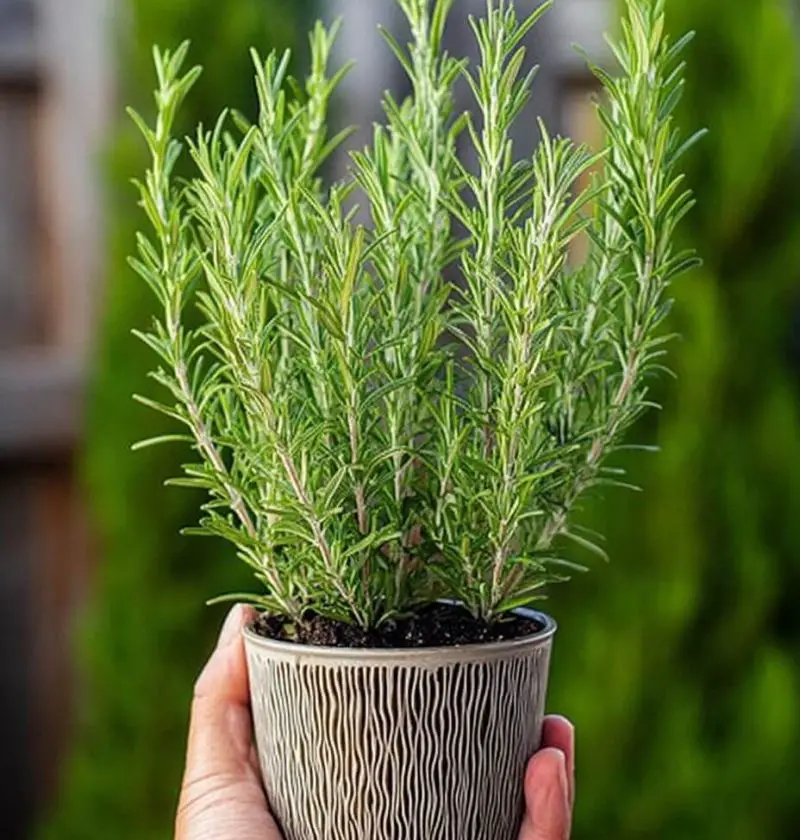You ever plant something and think, “Okay, I just need this to stay alive, please and thank you”?
That was me with rosemary.
It smelled amazing. It looked cute in the garden center. I brought it home, stuck it in a sunny spot, watered it now and then… and within a year, it looked like it had been through a windstorm and lost the will to live.
But I didn’t give up. I did some learning (read: trial, error, and more error), and now? My rosemary bush is going strong in year eleven. She’s practically part of the family at this point.
So if you’re hoping to grow rosemary that doesn’t just survive—but actually thrives for ten-plus years—here’s what I wish someone had told me when I started.
First: Get the Right Kind (Yes, It Makes a Difference)
Not all rosemary is built the same, and I learned that the hard way. Some varieties are super fussy in cold weather and just won’t last through winter unless you tuck them into bed with a blanket and a lullaby.
If you get chilly winters where you live, look for ‘Arp’ or ‘Hill Hardy’ rosemary. These gals can take a little frost without calling it quits. Most garden centers label them by zone now, but when in doubt, ask someone who looks like they’ve got soil under their nails.
Sunlight? All Day, Every Day
Rosemary loves the sun like I love my morning coffee—early, strong, and without interruption.
Give it a good 6 to 8 hours of full sun each day. Don’t plop it in that shady corner near the garage and expect miracles. This is a plant that needs light to thrive.
And the soil? Needs to drain well. Rosemary doesn’t like wet feet. If your yard holds water like a sponge, either amend it with sand and gravel or just pop that baby in a pot. Raised beds work like a charm too.
Prune It Like You Mean It
Now, this one caught me off guard at first. I thought pruning was just to make things look tidy. Nope—it’s vital to rosemary’s long-term health.
If you let it grow wild and don’t trim it once a year, it starts turning woody and sad. And once it gets all stiff and bare in the middle, it’s hard to bring it back.
Save This Recipe
Here’s what I do: every early spring, just when the new green starts to show, I trim off a few inches all around the top. Like giving it a little fresh haircut. That encourages bushy growth, and your plant stays full and lush instead of looking like a tired broom.
Just a tip: Don’t chop into the brown woody part. That’s a no-no. Only trim where there’s soft green growth. Trust me, it matters.
Don’t Baby It with Water
People kill rosemary with kindness—specifically, with water.
Yes, rosemary can handle drought. But in its first year, you want to help it settle in by watering deeply every week or so. Once it’s got its roots set, back off and only water when the soil feels dry a couple inches down.
I usually just poke a finger in and if it’s dry past the first knuckle, I give it a soak. Real high-tech, I know.
Mulch Lightly (But Don’t Smother It)
Mulch is great—it keeps weeds down and moisture in. But please, please don’t mound it up around the base of the plant like a cupcake wrapper. That’ll trap moisture and rot the stem.
Just a light ring around the edges will do the trick. Think more like a cozy scarf, less like a turtleneck.
Winter? Tuck It In If You Need To
If your winters get real frosty, even the hardy rosemary types need a little help. When it gets below freezing, I toss a piece of burlap over mine or use one of those little frost covers they sell at the garden store.
If your rosemary’s in a pot, even better—you can bring it into a sunny spot in the garage or mudroom when the temps drop. Just don’t forget it in there ‘til April. (Speaking from experience.)
Bonus Tip: Treat It Like a Friend, Not a Project
Honestly? Rosemary doesn’t ask for much. Give it sun, decent drainage, a little trim now and then, and it’ll give you fresh herbs for roast chicken, focaccia, potatoes—you name it—for years.
Mine grows right outside the back door, and I snip from it all the time. Sometimes I just brush my hand across it on my way in. The smell alone is worth growing it.
So don’t overthink it. Start with the right plant, stick it in the sun, prune it once a year, and let it live its best life. You’ll be shocked how easy it is once you stop fussing over it.

